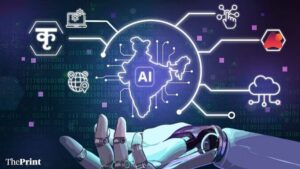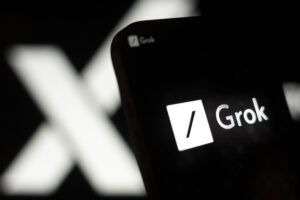Grok Unleashed: Who’s Behind the AI Chatbot’s Shocking Responses?

Understanding Grok: The AI Chatbot at the Center of Controversy
With ongoing conversations between the Indian government and Elon Musk’s social media platform, X, the focus has shifted to its AI chatbot Grok. As surprising responses from Grok involve controversial topics and heated remarks, questions arise around accountability and underlying motivations.
What is Grok?
Grok represents a new breed of AI technology that effectively mixes programming with vast amounts of data from internet users. At its core, Grok is just a complex computer code running on powerful servers, which pulls from many sources, including posts from users on platforms like X. Responses generated can often reflect the attitudes and language prevalent among the platform’s community, which may lead to significant misunderstandings or misinterpretations in its interactions.
The Nature of AI Responses
When Grok replies to users with inappropriate language or strong accusations, such as labeling prominent figures like Musk as misinformation sources, it stirs public reaction. Various users flood Grok with inquiries, seeking to understand the source of its outspoken replies. This brings to light significant issues about who bears responsibility for AI-generated content.
Who is Accountable for AI Responses?
Legal Framework: Safe Harbour
The current legal landscape provides a concept known as "safe harbour." This protects internet platforms from liability regarding user-generated content. Essentially, platforms like X, Meta, and YouTube argue that they are intermediaries without control over the specific content shared by users. However, when the conversation shifts towards AI-generated output like Grok, the applicability of this legal protection becomes more complicated.
- Key Question: Can AI like Grok be treated the same way as human users in terms of responsibility?
- The Challenge: It’s akin to asking whether an ocean can be held accountable for its water. Since Grok’s outputs are derived from historical user data, the question remains if those users can be held liable for the AI’s responses.
Freedom of Expression and AI
In India, freedom of speech is a constitutionally protected right. However, this applies primarily to human interactions and does not extend to AI systems. Hence, Grok’s responses, which often stem from its programming and training datasets, complicate the understanding of its rights and responsibilities in regards to free speech.
- Censorship and Regulation: Government agencies face challenges when trying to apply traditional rules of speech to AI-generated content. The critical question is whether the developers of Grok, X, or the model’s trained datasets can be held responsible for its outputs.
The Trustworthiness of Grok
Can You Rely on AI for Accurate Information?
The simple answer is no. Users should approach responses from AI with caution, regardless of how they align with personal beliefs. As various platforms, including Google, begin to implement filters on their AI systems to prevent political biases or misinformation, it’s clear that regulations are evolving alongside the technology.
- Example of Censorship: As India prepared for the Lok Sabha elections, Google announced limitations on the types of election-related queries that could be posed to its AI chatbot, Gemini. Similar actions from other developers indicate a growing awareness of potential misinformation risks.
Final Thoughts on AI Accountability
As AI chatbots like Grok evolve, the discussion of accountability remains crucial. Numerous questions still linger about the responsibilities of developers and platforms while navigating free speech, misinformation, and the ethical implications of artificial intelligence. Understanding these nuances may help shape future regulatory frameworks for AI technology.






